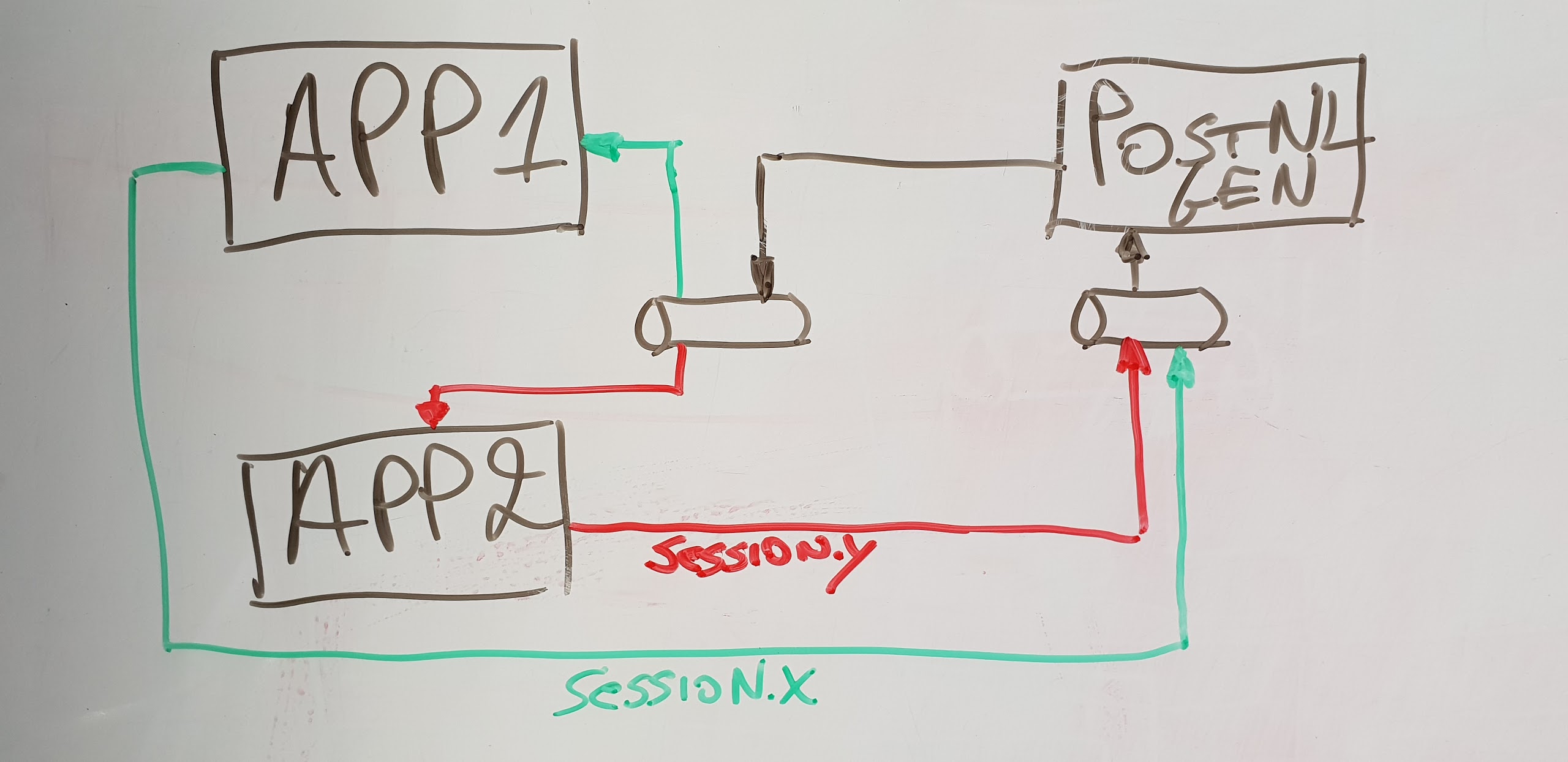Hello Seanfeldman,
Thank you for your reply!
However, it took some figuring out but I think I was able to achieve the setup from the diagram.
The process now is as follows:
I have one normal queue (PostNL queue) and one shared 'applications' queue that is sessions enabled
- An application (e.g App1) sends a message to the PostNL queue using a QueueClient and setting a unique SessionId
- The receiver handles the incoming messages through QueueClient.RegisterMessageHandler
- The receiver processes the message and sends a reply to the applications queue using QueueClient.SendAsync (the replymessage has the SessionId set to UniqueSessionId)
- The sender uses a session = SessionClient.AcceptMessageSessionAsync("UniqueSessionId")
- The sender can start receiving messages in this session using session.ReceiveAsync
(all the other applications listening on the applications queue will not compete for these reply messages as long as they use other session Ids)
Although a bit confusing, I do think that this setup is what is meant in the documentation.
Greetings.

